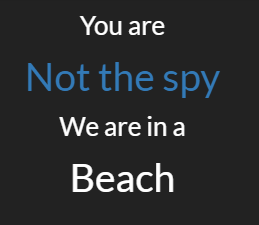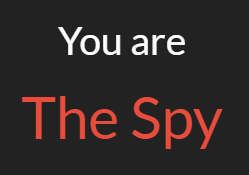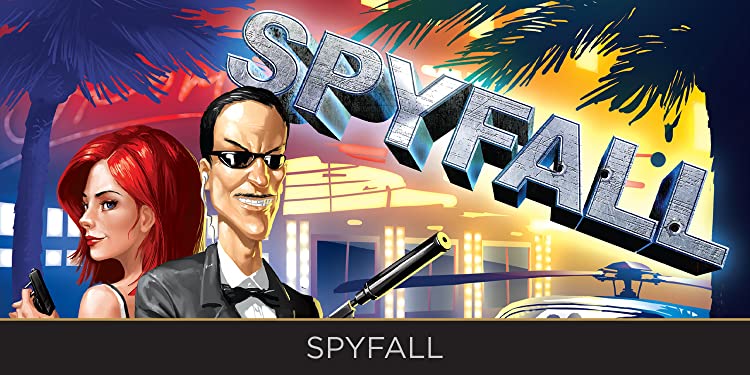Spyfall was originally a card game launched in 2014 by Alexandr Ushan. It is now available online as a web app on multiple websites, so my friends and I played on netgames.io developed by Luke Tsekouras, a website hosting multiple games, including Spyfall. Spyfall is a simple game where one player is the spy and all other players are not spies. The spy must deceive other players into thinking they are not the spy while all other players are trying to weed out the spy.
The simplicity of the game lends itself well to younger audiences. Indeed, this is supported by the original card game’s age range of 13+. Spyfall might not be suitable for even younger audiences since the game requires quick thinking, deception, and talking, which may be more difficult or unengaging for those under 13. At least 3 players are required for the game (one spy and two non-spies) while, in theory, an infinite number of people could play the game at once. However, a smaller maximum player count (perhaps 8 as suggested by the card game) would provide a more fun experience since each player would be able to engage in conversation and have a more direct impact on the outcome of the game.
In a round, each player is either given a location or they are the spy. For the next 5 minutes (a boundary) in the round, each player is allowed to ask other players questions to try to determine if the other players know the location (e.g. Is it hot here?). At any point, anyone can call for a vote to determine who the spy is. The spy wins if they guess the location and the other players win if they guess who the spy is. This is a unilateral competition game where one spy competes with everyone else! The spy has no resources other than the information they gather from other players.


There are many similar deception games including Werewolf and Mafia. Spyfall lacks the storytelling aspect of the other games, making it simpler to play since it has fewer roles. Additionally, Spyfall has a time limit that enforces the pace of the game rather than an indefinite game. Although there is not an objective measure of whether it’s better or worse, Spyfall may be better for younger audiences since it is easier to set up and play while Werewolf and Mafia could be better for older and more creative audiences who are able to tell stories and immerse themselves in the fantasy of those games.
After playtesting, Spyfall was fairly fun! It was easy to explain the rules and dive into the gameplay. There is a thrill when being the spy and trying to gather as much information as you can. After a few rounds, however, gameplay became a bit repetitive and non-spies were not as engaged since all they were doing was asking questions. Additionally, since I played with only 3 players, the game sometimes went too quickly for it to be very engaging.
In the first round, one of the players forgot the location, and since the online version doesn’t show your location persistently, we ended up restarting the round. There were no standout moments of success during our play.
I would potentially add an extra mechanic for non-spies to keep them more engaged during the round. Perhaps, a non-spy could become a spy in the middle of the round. For example, 2 minutes into a round, a non-spy could receive a notification that they are now also a spy. This changes the fundamental rule that there can only be one spy, but this addition forces non-spies to be even more aware of how other players are speaking/acting. The newly converted spy could try to help the first spy by deflecting blame or sneaking in helpful information.



